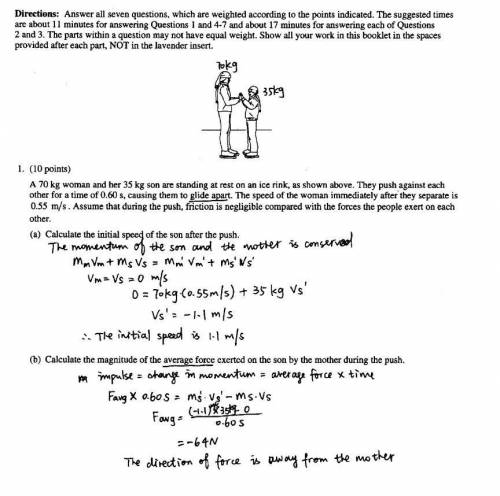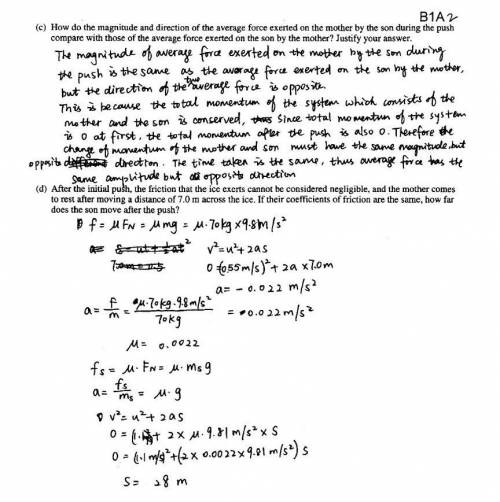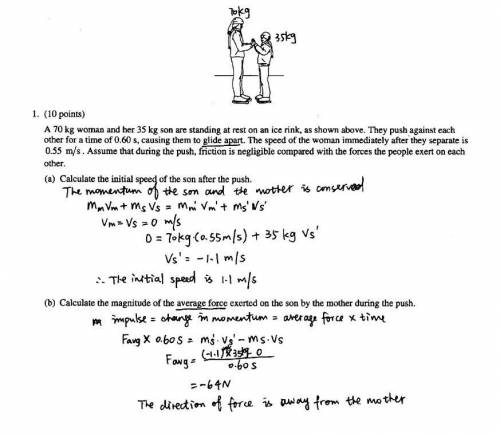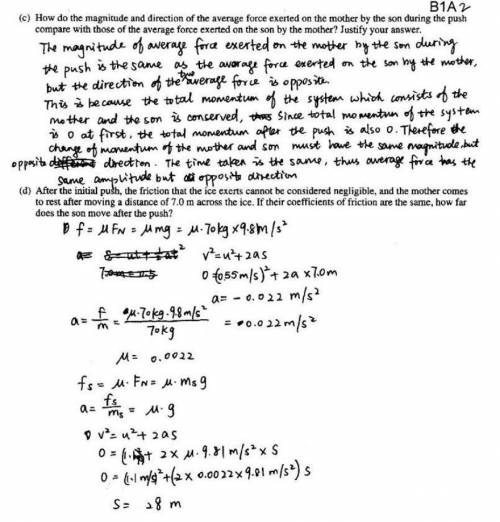
The drawing on the right shows a man (mass = 70kg) and the child (mass = 35 kg) push each other apart. The man moves away with a speed of 0.3 m/s relative to the ice.
Calculate the velocity of the child relative to the ice.
LET MOMENTUM EQUATION GUIDE YOUR THINKING...
SHOW YOUR WORK - INCLUDE UNITS
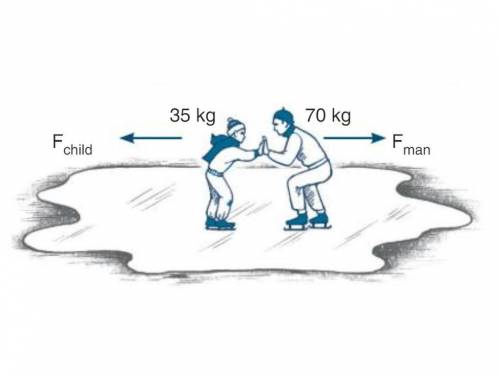

Answers: 1


Other questions on the subject: Physics

Physics, 21.06.2019 17:20, jvanegas6797
Research the neutrino using the internet and report your findings. in a nuclear decay, the nucleus of an atom splits apart. larger particles can be detected and their masses and velocities can be recorded. explain how the existence and properties of the neutrino could be predicted using the conservation laws.
Answers: 3

Physics, 21.06.2019 19:30, Esmer1030
Agymnast dismounts off the uneven bars in a tuck position with a radius of 0.3m (assume she is a solid sphere) and an angular velocity of 2rev/s. during the dismount she stretches out into the straight position, with a length of 1.5m, (assume she is a uniform rod through the center) for her landing. the gymnast has a mass of 50kg. what is her angular velocity in the straight position?
Answers: 3

Physics, 21.06.2019 23:00, desiwill01
We want to calculate the total metabolic heat generated by a singing canary taking into account heat transfer by radiation, convection and exhaling air. the air temperature is 20 oc, canary’s body internal and surface temperature is 33oc, external body surface convective heat transfer coefficient is 25.2 w/m2 .k, temperature difference between the inhaled and exhaled air is 4.3 oc, the ventilation rate is 0.74 cc of air per second, specific heat of air is 1.0066 kj/kg. k and density of air is 1.16 kg/m3 . assume the canary’s body to be a cylinder with 7 cm diameter and 9 cm length, and heat exchange is from the side as well as the top and bottom of cylinder. calculate 1) the net rate of heat lost by radiation, assuming heat gained by the bird through radiation from the surroundings is 11.5 w; 2) rate of heat transferred by convection to the surrounding air; 3) rate of heat transferred in the exhaling air without considering any internal evaporation; 4) total metabolic power.
Answers: 2

Physics, 22.06.2019 07:30, bell777
30 points - when can a theory be modified if a new type of technology allows for new observations that raise new questions? a. immediately, while the questions about the theory are being asked b. after new hypotheses related to the theory are tested in experiments c. only after the new observations disprove all parts of the theory d. while scientists begin to think about how the theory could improve
Answers: 1
You know the right answer?
The drawing on the right shows a man (mass = 70kg) and the child (mass = 35 kg) push each other apar...
Questions in other subjects:

Biology, 18.07.2019 23:50


Mathematics, 18.07.2019 23:50






Mathematics, 18.07.2019 23:50

